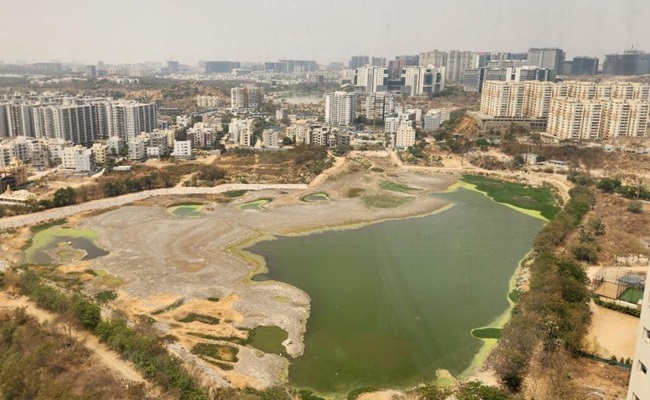
Dear Team HYDRAA,
I truly admire HYDRAA Team unwavering commitment to environmental conservation and leadership in restoring lakes and canals. HYDRAA Team dedication will undoubtedly inspire both the young and the old to contribute to society in meaningful ways.
While I’m sure you have extensive plans in place, I wanted to share a transformative idea that could not only multiply the returns from the HYDRAA project but also ensure your efforts are remembered for generations to come.
Proposal: Solar Parks in Buffer Zones of Lakes
Key Concept: Use the buffer zones (100 to 150 meters from the Full Tank Level line) of lakes to build solar parks. This will serve the dual purpose of protecting lakes from future encroachment while generating renewable energy, with significant benefits for both the government and local farmers.
Case Study Example:
Gandipet Twin Lakes: With a perimeter of around 80 km and a width of 150 meters, approximately 3,000 acres of land is available. This area could host a 600 MW solar park. This project could be realized without government expenditure by leasing the land to major corporations (Tata, Adani, etc.) through global tenders.
Income Potential: Farmers and the government could earn ₹30,000 per acre annually through leases.
Key Benefits:
1. Replicable Across States: The model can be replicated in other states, offering recurring income to farmers who have limited-use or barren land.
2. Sustainable Income for Farmers: By leasing the land, local farmers gain a steady revenue stream, transforming otherwise unproductive land into a financial asset.
3. Permanent Lake Protection: Solar parks provide a physical barrier, ensuring that lakes are protected for decades, no matter the political climate.
4. Safeguards in Cities: In urban areas, solar panel installations act as "solar fences," deterring illegal encroachment and discouraging the construction of farmhouses.
5. Well-Maintained Public Spaces: The areas surrounding the lakes, including the buffer zone and beneath the solar panels, can be well-maintained under the oversight of large corporations like Tata and Adani.
Additional Amenities: Walkways, bike paths, and small parks can be integrated alongside these solar parks, further benefiting the community.
6. Job Creation: The installation and maintenance of solar farms will create significant employment opportunities, especially in rural areas.
7. Utilizing Existing Resources: The debris from demolitions and accumulated silt from the lakes can be used to grade and prepare the solar park areas.
8. Quick Implementation: Solar park projects can be initiated almost immediately, bringing fast benefits and visible returns in a short span of time.
Alternative for Urban Areas:
In cities where solar parks are not feasible, we could focus on planting tropical plants like bamboo and eucalyptus. These green belts would serve as protective barriers, and we can build attractive walkways for public enjoyment.
Final Thought:
This plan not only amplifies the success of the HYDRAA project but also ensures that whenever people see these solar parks, they will remember your pivotal role in safeguarding lakes and championing renewable energy.
HYDRAA leadership will undoubtedly be remembered alongside other visionary personalities/actions in history.
I am confident that this strategy will leave an indelible mark and inspire others to contribute to society in a manner that blends sustainability, innovation, and community welfare.
With great respect and admiration,
This is a comprehensive and visionary approach, positioning the HYDRAA project as a model for future environmental and energy initiatives. It would ensure long-term lake preservation while creating sustainable income for both local communities and the government.
Venkat Gajjala











